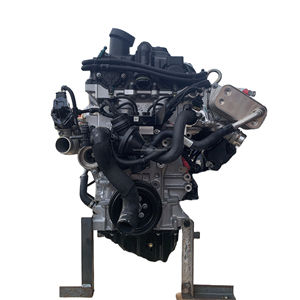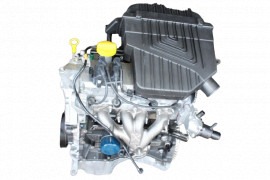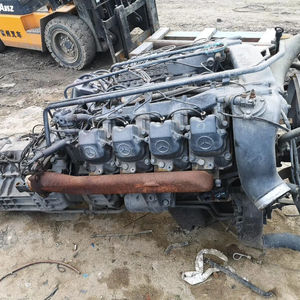Exploring the Inner Operation of a Compact Automobile's Engine System
As motorists, we typically take for provided the complex processes that take place within the boundaries of our car's engine system. The compact yet complicated machinery that moves us onward is a wonder of engineering accuracy and sychronisation. From the controlled explosions in the burning chamber to the precise timing of fuel shot, every component plays a crucial function in the smooth operation of the engine. In this expedition of a small vehicle's engine system, we will certainly decipher the internal functions of this mechanical harmony, dropping light on the mysteries that drive us onward on our everyday trips.
Burning Process Summary
The burning process in a small lorry's engine system is an essential mechanism that successfully transforms fuel right into power to power the vehicle. This procedure takes place within the combustion chamber of the engine, where fuel and air mix, spark, and create controlled explosions. The combustion procedure contains 4 major stages: intake, power, exhaust, and compression.
Throughout the consumption stage, the piston relocates downward, attracting a combination of air and fuel right into the combustion chamber. The following stage, compression, entails the piston relocating upward, pressing the air-fuel mixture to boost its potency. Ultimately, in the power stage, the trigger plug fires up the pressed mix, causing a quick development of gases that compels the piston pull back. This descending activity creates the power required to drive the lorry. In the exhaust stage, the scorched gases are expelled from the burning chamber via the exhaust valve, preparing the chamber for the next cycle. This cyclic burning process is essential to the procedure of a compact automobile's engine system, ensuring effective power conversion for propulsion.
Piston and Cyndrical Tube Communication

The piston's specific fit within the cyndrical tube is crucial for preserving ideal compression and preventing energy loss during combustion. Limited clearances in between the piston and cyndrical tube wall surfaces make certain reliable sealing, enabling the piston to move efficiently without allowing gases to leakage past. Appropriate lubrication is likewise essential to minimize rubbing and put on in between these components, improving durability and performance.
Furthermore, the design and products made use of in producing the piston and cylinder impact engine efficiency and resilience. Modern engines frequently employ light-weight yet sturdy products like click this site aluminum alloys for pistons and cylinder liners to reduce inertia and boost thermal performance. Generally, the harmonious communication in between the piston and cylinder is basic to the engine's capability and general performance.
Gas Injection System Functionality
Gas injection systems in portable automobile engines play an important function in specifically providing fuel to the burning chamber for effective and regulated ignition. The gas injection system operates by injecting gas into the burning chamber at the ideal moment throughout the engine's procedure (opel corsa engine). This precise timing guarantees that the fuel blends evenly with the air for correct combustion, causing improved gas efficiency and minimized emissions
There are mostly two types of gas injection systems made use of in compact automobile engines: port gas injection (PFI) and straight fuel shot (DFI) PFI systems infuse fuel right into the intake port before the consumption valve, while DFI systems inject gas directly into the burning chamber. Both systems have their benefits, with DFI providing far better fuel atomization and PFI offering an extra affordable option.
Understanding Engine Cooling Systems
Reliable operation of a small automobile's engine relies heavily on the efficiency of its cooling devices. Engine air conditioning is vital to protect against getting too hot, which can result in severe damages and lowered performance. The cooling system in a small automobile typically includes a number of elements collaborating to control the engine temperature level. One critical part is the radiator, which uses coolant to absorb warmth from the engine. As the warm coolant flows with the radiator, it important link releases warm into the air, cooling off prior to going back to the engine. The water pump distributes the coolant with the engine and radiator, ensuring a consistent flow to regulate temperature level. Additionally, the thermostat helps regulate the coolant circulation to keep optimum engine temperature level. Some cars also have cooling down followers that turn on when added air conditioning is required, such as during hefty website traffic or heat. Comprehending these engine cooling systems is vital for maintaining the efficiency and long life of a small car's engine system.

Exhaust System Components Explained
The ideal performance of a small lorry's engine cooling devices depends on a complementary system recognized as the exhaust system, which makes up numerous important parts for guaranteeing reliable emissions and engine efficiency. The exhaust manifold accumulates exhaust gases from the engine's routes and cylinders them to the catalytic converter.
One critical element of the exhaust system is the oxygen sensing unit, which keeps track of the oxygen degrees in the exhaust gases to aid regulate gas intake and guarantee ideal engine efficiency. opel corsa engine. Additionally, the resonator a knockout post may be existing in some exhaust systems to reduce noise degrees. On the whole, the exhaust system plays an important function in keeping engine performance, decreasing damaging emissions, and guaranteeing a quieter driving experience for compact car proprietors

Final Thought
In conclusion, the portable car's engine system is an intricate mix of components that collaborate to promote the combustion process, convert fuel right into power, and expel waste gases. Understanding the inner functions of the engine system, consisting of the piston and cyndrical tube communication, fuel injection system, engine cooling systems, and exhaust system elements, is critical for maintaining optimal performance and effectiveness of the automobile.
The burning procedure in a portable lorry's engine system is a critical mechanism that efficiently converts fuel into energy to power the vehicle.Fuel injection systems in compact vehicle engines play an essential function in exactly providing fuel to the combustion chamber for efficient and controlled ignition.There are largely 2 kinds of gas injection systems utilized in compact vehicle engines: port fuel shot (PFI) and straight gas injection (DFI) Understanding these engine cooling devices is essential for keeping the efficiency and durability of a compact vehicle's engine system.
The optimum performance of a small car's engine cooling devices depends on a corresponding system understood as the exhaust system, which comprises numerous crucial parts for making sure efficient emissions and engine efficiency.